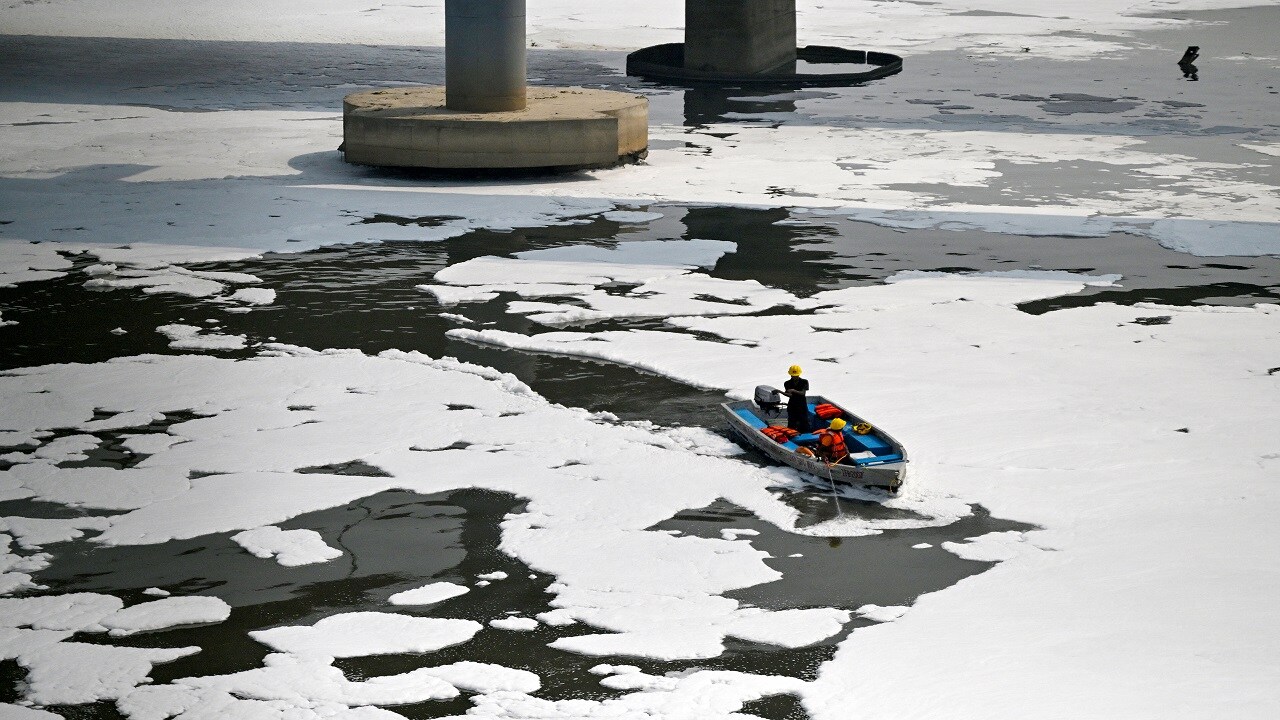Aims and Objectives of the Yamuna Manthan-2025 Conference in Delhi

The Government has acknowledged the alarming pollution levels in the Yamuna River, with 33 water quality monitoring stations established across five states: Uttarakhand, Himachal Pradesh, Haryana, Delhi, and Uttar Pradesh. Of these, only 13 stations meet the bathing standards. The primary contributors to the river’s pollution in Delhi include the discharge of untreated sewage, the lack of Common Effluent Treatment Plants (CETPs) in certain industrial areas, and delays in sewage treatment project upgrades.
Pollution Sources in the Yamuna
The Delhi Pollution Control Committee (DPCC) has reported that a significant gap in sewage treatment exists, amounting to 645.55 million liters per day (MLD) as of June 2025. This untreated sewage is a major factor in the river’s deteriorating water quality. Additionally, the absence of CETPs in some approved industrial zones exacerbates the pollution problem. The government has also pointed to delays in the completion of new projects and the rehabilitation or upgrading of existing sewage treatment facilities as critical issues that need addressing.
These factors collectively contribute to the ongoing environmental crisis affecting the Yamuna, which is vital for the surrounding communities and ecosystems. The government recognizes the urgent need for effective solutions to mitigate this pollution and restore the river’s health.
Government Initiatives for Rejuvenation
To combat the rising pollution levels, the National Mission for Clean Ganga (NMCG) is actively supporting the efforts of the states involved by providing financial assistance to Himachal Pradesh, Haryana, Delhi, and Uttar Pradesh. Various projects aimed at rejuvenating the Yamuna are currently in different stages of planning, construction, or completion. The NMCG is closely monitoring these initiatives to ensure their effectiveness.
Under the Namami Gange Programme, the NMCG has sanctioned a total of 35 projects for the rejuvenation of the Yamuna, with an estimated cost of ₹6,534 crore. These projects aim to create a sewage treatment capacity of 2,243 MLD, of which 21 projects have already been completed. The government is committed to enhancing the river’s water quality through these extensive efforts.
Challenges and Future Plans
Despite the government’s initiatives, challenges remain in fully addressing the pollution crisis in the Yamuna. The lack of adequate infrastructure, such as CETPs, and the slow pace of project completion hinder progress. The government has acknowledged that information regarding certain aspects of the pollution issue is not readily available, which complicates the response efforts.
Moving forward, the government plans to expedite the completion of ongoing projects and enhance monitoring systems to ensure compliance with environmental standards. The focus will also be on increasing public awareness and participation in pollution control efforts, as community involvement is crucial for the success of these initiatives.
Observer Voice is the one stop site for National, International news, Sports, Editor’s Choice, Art/culture contents, Quotes and much more. We also cover historical contents. Historical contents includes World History, Indian History, and what happened today. The website also covers Entertainment across the India and World.

